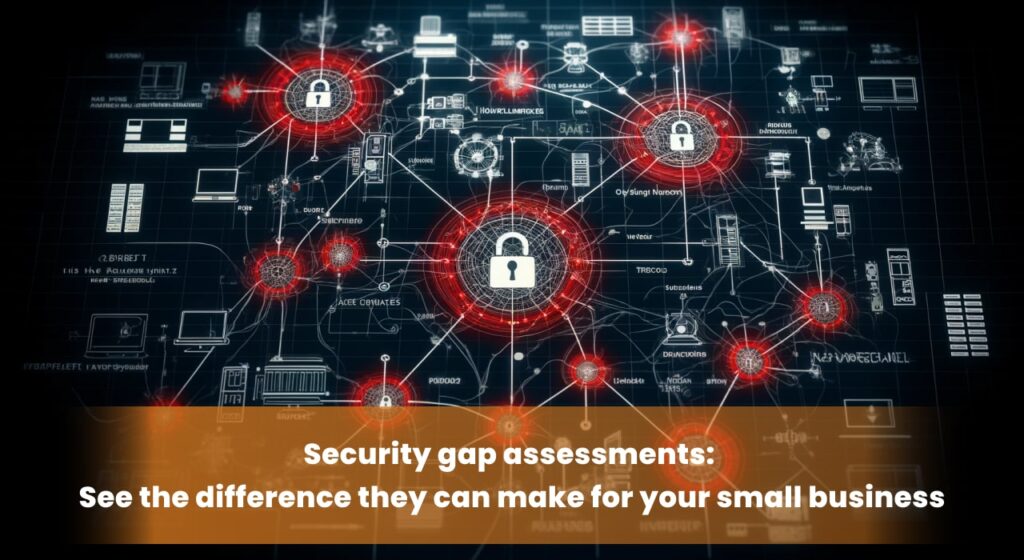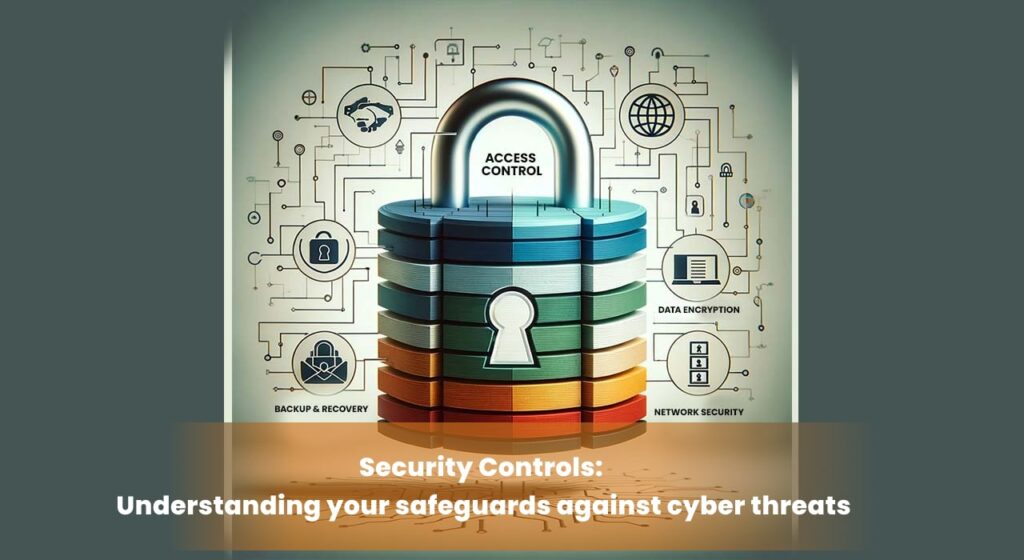
The digital landscape has become the lifeblood of modern small businesses. From customer relationship management to cloud-based operations, technology underpins every facet of their success. However, this dependence on interconnected systems introduces a critical vulnerability: the ever-evolving threat of cyberattacks. A 2023 study by Ponemon Institute revealed that the average cost of a data breach for a small business reached a staggering $4.24 million, highlighting the devastating financial repercussions these attacks can inflict.
Beyond financial losses, cyberattacks can erode customer trust, disrupt operations, and damage a company’s reputation. In a 2022 survey by Accenture, 61% of consumers reported abandoning a brand after experiencing a data breach, emphasizing the potential long-term consequences.
Proactive measures are essential for safeguarding small businesses in this digital battlefield. A security gap assessment serves as a vital tool in this fight. It’s a comprehensive evaluation of a company’s IT infrastructure, security controls, and overall cybersecurity posture. This assessment acts as a roadmap, identifying weaknesses and vulnerabilities that malicious actors might exploit. By proactively addressing these gaps, small businesses can significantly strengthen their defenses and prevent costly security incidents.
Regular security gap assessments are not a one-time fix. The digital threat landscape is constantly evolving, with new vulnerabilities emerging at a rapid pace. Conducting these assessments periodically allows businesses to stay ahead of the curve, ensuring their security measures remain robust and effective.
Why Conduct a Security Gap Assessment?

In today’s threat-laden digital environment, a cybersecurity risk assessment plays a pivotal role in empowering small businesses to understand their current security posture. This comprehensive evaluation acts as a digital x-ray, revealing vulnerabilities and blind spots within a company’s IT infrastructure, security controls, and data handling practices. By proactively identifying these weaknesses, small businesses gain a clear picture of their cybersecurity preparedness, enabling them to address critical gaps before attackers exploit them.
A security gap assessment offers a multitude of benefits for small businesses, fostering proactive risk management. By pinpointing potential security breaches before they occur, businesses can prioritize investments in targeted security solutions that best mitigate identified risks. This allows them to allocate resources efficiently and maximize the return on their cybersecurity investments.
Furthermore, a security gap assessment can be instrumental in demonstrating compliance with industry regulations or data protection laws. Many regulations mandate specific security controls to safeguard sensitive data. A documented assessment provides evidence that a business has taken proactive steps to comply with these regulations, potentially mitigating legal ramifications and fostering trust with clients and partners.
In essence, a security gap assessment serves as a cornerstone for a robust cybersecurity strategy for small businesses. It empowers them to proactively manage risks, make informed security investment decisions, and potentially demonstrate regulatory compliance.
Benefits of Security Gap Assessments for Small Businesses

Security gap assessments offer a multitude of advantages that empower small businesses to navigate the complex cybersecurity landscape. A 2022 Verizon Data Breach Investigations Report found that 43% of cyberattacks targeted small businesses, highlighting their vulnerability. By proactively conducting a security gap assessment, small businesses can reap significant benefits:
- Fortify Defenses and Prevent Data Breaches: A thorough assessment unearths weaknesses in a company’s IT infrastructure and security controls, enabling them to plug these gaps before cybercriminals exploit them. This proactive approach significantly reduces the risk of data breaches, safeguarding sensitive customer and financial information.
- Optimize Security Investments: The assessment process prioritizes identified vulnerabilities based on their severity and potential impact. This allows small businesses to strategically allocate resources towards the most critical security solutions, maximizing the return on their cybersecurity investments.
- Demonstrate Compliance with Regulations: Many industries and data protection laws mandate specific security controls to safeguard sensitive data. A documented security gap assessment serves as evidence that a small business has taken proactive steps to comply with these regulations. This can mitigate potential legal repercussions and foster trust with clients and partners seeking to ensure their data is protected.
- Enhance Business Continuity: Cyberattacks can disrupt operations, leading to lost revenue and productivity. By identifying and addressing vulnerabilities beforehand, security gap assessments bolster a small business’s resilience against cyber threats. This proactive approach helps ensure business continuity and minimizes potential downtime caused by cyberattacks.
In conclusion, security gap assessments are not just a security best practice; they are a strategic investment for small businesses. These assessments empower them to fortify their defenses, optimize security spending, potentially comply with regulations, and enhance overall business continuity.
Preparing for Your Security Gap Assessment

Before embarking on a security gap assessment, a little groundwork by your small business can significantly enhance the process and ensure a more comprehensive outcome. Here are some key preparatory steps:
- Define the Scope of the Assessment: Clearly outline what aspects of your IT infrastructure and data handling practices will be evaluated. This could encompass your network architecture, security controls (firewalls, access controls), data encryption practices, and employee cybersecurity awareness training programs. Tailoring the scope to your specific needs allows for a focused and efficient assessment.
- Identify Key Stakeholders: Assemble a team comprised of individuals from various departments within your small business. This could include representatives from IT, finance, human resources, and legal departments. Each department possesses unique insights into data handling practices and potential security risks within their domain. Their involvement ensures a holistic assessment that considers all aspects of your cybersecurity posture.
- Gather Relevant Documentation: Streamline the assessment process by compiling essential documents beforehand. This may include network diagrams, security policies outlining access controls and data encryption protocols, and employee cybersecurity training materials. Having this documentation readily available facilitates a smoother and more efficient assessment for both your team and the security professionals conducting it.
By taking these preparatory steps, your small business lays the groundwork for a successful security gap assessment. This proactive approach demonstrates your commitment to cybersecurity and allows security professionals to delve deeper into your specific environment, ultimately leading to a more comprehensive and actionable report. For additional guidance on preparing for a security gap assessment, consider consulting with reputable cybersecurity services providers who can offer tailored recommendations based on your unique business needs.
Conducting the Security Gap Assessment
The security gap assessment process itself can be broken down into several key stages:
Data Collection and Analysis

Gathering comprehensive data is the foundation for a successful security gap assessment. This data provides a clear picture of your small business’s current IT security posture. The assessor will collect information on various aspects, including:
| Category | Data Points |
|---|---|
| IT Infrastructure | Network diagrams, hardware and software inventories, operating system versions |
| Security Controls | Access control policies, password management practices, firewalls and intrusion detection systems (IDS) configurations |
| Data Handling Practices | Data classification procedures, data encryption methods, employee data security training records |
By thoroughly analyzing this collected data, the assessor can identify potential weaknesses and areas where security controls may be lacking. This in-depth analysis allows for a more targeted and effective evaluation.
Understanding Security Controls

Security controls are essentially safeguards implemented to protect your information assets from unauthorized access, disclosure, alteration, or destruction. These controls can be categorized into various areas, such as:
- Access Control: Restricting access to sensitive data and systems based on user privileges.
- Encrypting data: involves transforming it into an unreadable format without the appropriate decryption key.
- Network Security: Firewalls and intrusion detection systems that monitor and filter network traffic.
- Data Backup and Recovery: Having a robust plan to restore data in case of a cyberattack or system failure.
A thorough understanding of your existing security controls allows the assessor to evaluate their effectiveness in mitigating potential threats.
Once you have a clear understanding of your vulnerabilities, the next step is to develop a remediation plan to address them. This plan will outline the specific actions you need to take to mitigate these risks. However, choosing the right cybersecurity solution is equally important to effectively implement your remediation plan.
In our article, “The Essential Features to Consider When Choosing a Cybersecurity Solution: “we provide a comprehensive guide to navigate the selection process. This companion piece explores essential features to consider, additional functionalities to bolster your defenses, and key factors to evaluate when making your final decision.
Identifying and Assessing Vulnerabilities

- Vulnerability Scanning: Automated tools scan your IT systems for known weaknesses and misconfigurations.
- Penetration Testing: Simulates a cyberattack to identify exploitable vulnerabilities that attackers might leverage.
By employing these comprehensive techniques, a security gap assessment provides a clear picture of your small business’s cybersecurity strengths and weaknesses, forming a solid foundation for developing a remediation plan.
Risk Prioritization
The security gap assessment uncovers a landscape of vulnerabilities within your small business’s cybersecurity posture. However, not all vulnerabilities pose the same level of threat. Risk prioritization serves as a critical step in effectively mitigating these threats by allocating resources strategically.
This prioritization process assigns a risk level to each identified vulnerability. Several factors contribute to this risk assessment:
- Likelihood of Exploit: This considers the probability of a cybercriminal successfully exploiting the vulnerability. Factors like the prevalence of the exploit method and the ease of exploitation influence this likelihood.
- Potential Impact on Business Operations: The potential consequences of a successful exploit are evaluated. This could encompass financial losses, reputational damage, data breaches, or operational disruptions. The severity of these potential impacts influences the overall risk level.
- Sensitivity of Exposed Data: The type of data at risk plays a crucial role. Highly sensitive data, such as customer financial information or intellectual property, carries a greater weight in the risk assessment compared to less sensitive data.
By considering these factors, a risk score is assigned to each vulnerability, enabling you to prioritize remediation efforts. This ensures that your small business focuses on addressing the most critical threats first, maximizing the effectiveness of your cybersecurity investments. Effectively prioritizing risks allows you to allocate resources efficiently and bolster your defenses against the most imminent cyber threats.
Developing a Remediation Plan
The vulnerabilities unearthed during the security gap assessment represent potential entry points for cyberattacks. Developing a clear and actionable remediation plan is essential to effectively address these weaknesses and fortify your small business’s cybersecurity posture. This plan serves as a roadmap for mitigating identified risks and safeguarding your valuable data.
A well-structured remediation plan outlines specific actions that need to be taken to address each vulnerability. These actions may involve:
- Patching software vulnerabilities: Updating software with the latest security patches eliminates known vulnerabilities that cybercriminals can exploit.
- Implementing additional security controls: This could involve strengthening access controls, deploying firewalls, or encrypting sensitive data.
- Employee security awareness training: Educating employees on best practices for data security and identifying phishing attempts can significantly reduce the risk of human error.
The plan should also establish a clear timeline for completing each remediation activity. Assigning ownership for each action to specific individuals or teams ensures accountability and facilitates progress tracking.
| Element | Description |
|---|---|
| Vulnerability | A brief description of the identified vulnerability. |
| Remediation Action | The specific action(s) required to address the vulnerability. |
| Timeline | The timeframe for completing the remediation action. |
| Responsible Party | The individual or team accountable for completing the action. |
By creating a comprehensive remediation plan and diligently executing it, small businesses can significantly reduce their cybersecurity risks and enhance their overall security posture. This proactive approach fosters resilience against cyber threats and safeguards valuable business assets.
In today’s digital landscape, cyber threats pose a constant challenge for small businesses. A security gap assessment serves as a powerful tool for proactively identifying vulnerabilities within your IT infrastructure, security controls, and data handling practices. This comprehensive evaluation empowers you to understand your current cybersecurity posture and take targeted steps to mitigate risks.
The benefits of conducting regular security gap assessments are undeniable for small businesses. They enable proactive defense against cyberattacks, optimize security investments by focusing on the most critical threats and potentially demonstrate compliance with industry regulations. By prioritizing these assessments, small businesses can bolster their resilience against cyber threats and safeguard their valuable data.
This article has provided a foundational understanding of the security gap assessment process. For further information and comprehensive resources on cybersecurity for businesses, consider exploring reputable sources such as the National Institute of Standards and Technology (NIST) Cybersecurity Framework or the Small Business Administration (SBA) cybersecurity resources. Taking a proactive approach to cybersecurity is essential for small businesses to thrive in the digital age.
Categorized in:
Comments